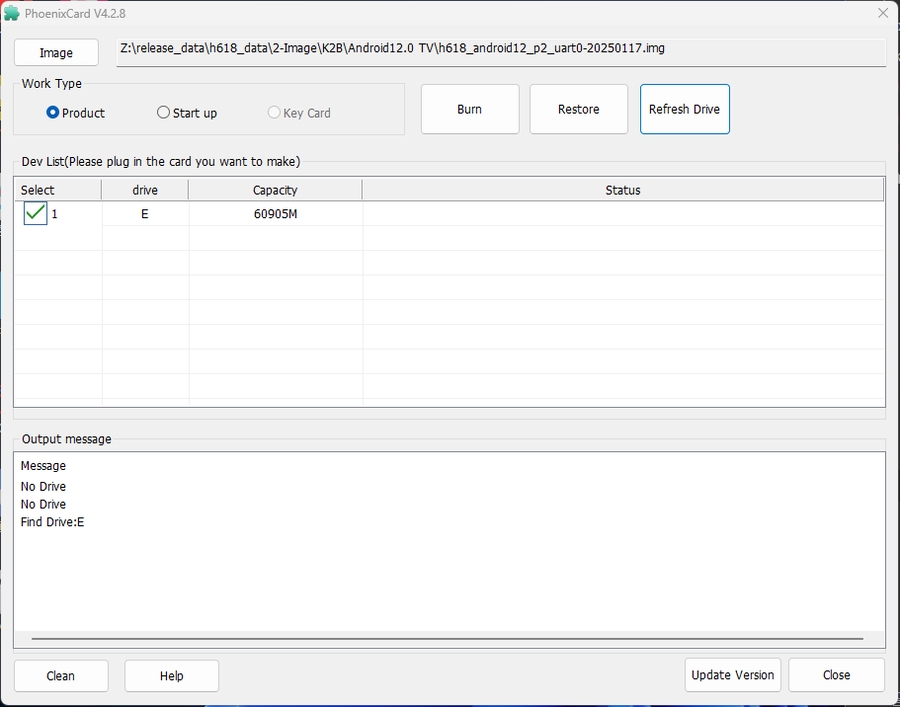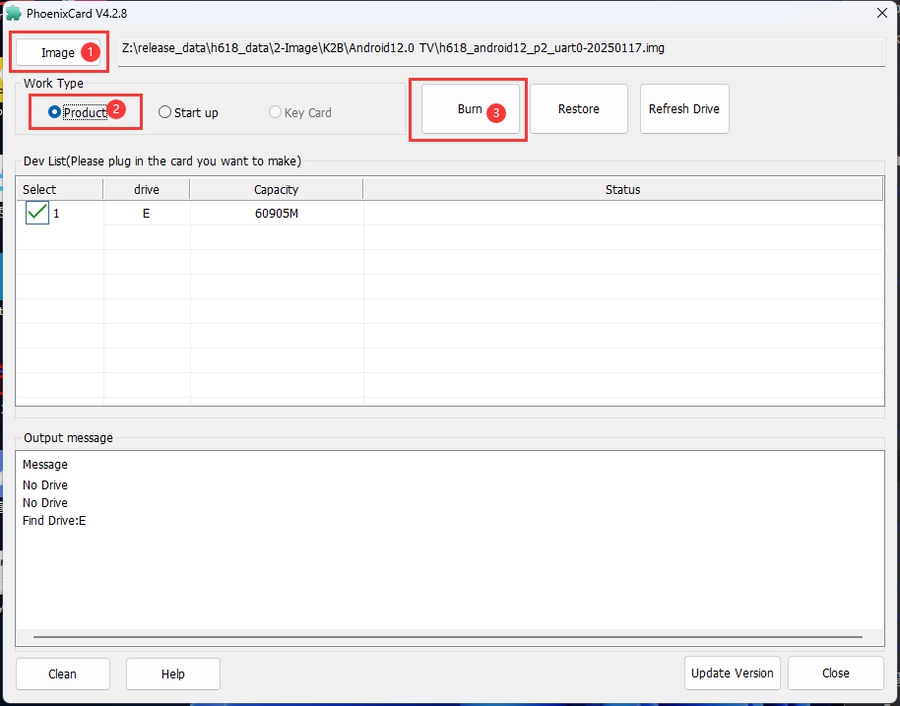SD_Card_Flashing
The path of the burning tool network disk:
5-DevelopmentTool\SD_Boot_Card_Tool\PhoenixCard4.2.8.rarInstall the Burning Tool
Extract PhoenixCard.rar and run the tool. The interface is shown below:

Burn the Image
Differences between “Product” and “Start up”
Product: Automatically burns the system image from the SD card into eMMC. It cannot boot directly.
Start up: Boots the system directly from the SD card.
Start up Card Burning Steps
Insert the SD card into the computer.
Follow the steps below in the burning tool:

Insert the burned SD card into the development board and power on to boot automatically.
ProductCard Burning Steps
Select the image file.
Choose Product.
Start burning.

Insert the SD Product card into the development board and power on.
Last updated